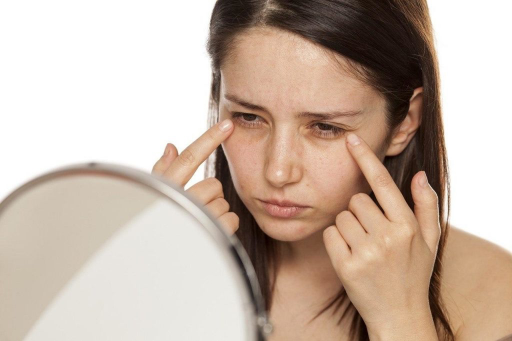自動車整備士の求人情報 – 安定したキャリアを目指す方へ
Thyroid Eye Disease (TED): Recognizing Symptoms and Managing Eye Health
Thyroid Eye Disease (TED) is a progressive autoimmune condition that affects the eyes, most commonly in individuals with thyroid disorders such as Graves' disease. Early detection and proper management are crucial to preserving eye function and preventing long-term complications. Understanding the signs, risk factors, and treatment options can help individuals take proactive steps toward protecting their vision and overall eye health.
Thyroid Eye Disease (TED) is a progressive autoimmune condition that affects the eyes, most commonly in individuals with thyroid disorders such as Graves' disease. Early detection and proper management are crucial to preserving eye function and preventing long-term complications. Understanding the signs, risk factors, and treatment options can help individuals take proactive steps toward protecting their vision and overall eye health.

What is Thyroid Eye Disease?
TED, also known as thyroid-associated orbitopathy or Graves’ orbitopathy, occurs when the immune system mistakenly attacks the tissues, muscles, and fat behind the eyes, leading to inflammation and swelling. This condition can cause mild to severe eye symptoms, ranging from irritation to significant vision impairment.
TED is most commonly linked to Graves’ disease, an autoimmune disorder that causes hyperthyroidism (overactive thyroid), but it can also occur in individuals with hypothyroidism or normal thyroid levels.
Early Symptoms of Thyroid Eye Disease
TED symptoms often develop gradually, and early warning signs may be subtle. Recognizing them early allows for better disease management and improved outcomes.
Mild Symptoms That May Indicate TED:
- Eye puffiness or swellingaround the eyelids
- Dry, irritated, or gritty eyes(often mistaken for allergies or dry eye syndrome)
- Light sensitivity (photophobia)
- Increased tearing or watery eyes
- A feeling of pressure or discomfort behind the eyes
These symptoms can sometimes come and go, but persistent or worsening eye discomfort should be evaluated by a healthcare professional.
Progression of TED: Moderate to Severe Symptoms
As TED advances, the inflammation and swelling in the eye socket can lead to more noticeable and concerning symptoms:
- Bulging or protruding eyes (proptosis)due to increased pressure in the eye socket
- Eyelid retraction, giving the eyes a wide, staring appearance
- Redness and persistent swellingof the eyes and surrounding tissues
- Difficulty moving the eyes, leading to pain when looking in different directions
- Double vision (diplopia)caused by eye muscle inflammation and misalignment
Severe TED Symptoms That Require Urgent Care
If left untreated, TED can lead to serious vision complications. Seek immediate medical attention if you experience:
- Sudden or worsening double vision
- Blurred or loss of vision
- Severe eye pain or intense pressure
- Difficulty closing your eyes completely, leading to excessive dryness
- Loss of peripheral vision or changes in color perception
These symptoms may indicate optic nerve compression (dysthyroid optic neuropathy, DON), which can lead to permanent vision loss if not treated promptly.
What Causes TED? Understanding the Risk Factors
While the exact cause of TED is not fully understood, several factors increase the risk of developing the disease:
✔ Thyroid Disorders: Individuals with Graves’ disease are at the highest risk, but TED can also affect people with hypothyroidism or normal thyroid function.
✔ Smoking: Studies show that smoking significantly increases the risk and severity of TED by worsening inflammation.
✔ Family History: A genetic predisposition to autoimmune diseases can increase the likelihood of developing TED.
✔ Gender and Age: TED is more common in women, particularly between the ages of 40 and 60, although men may experience more severe cases.
✔ Radioactive Iodine Therapy: Some individuals who undergo radioactive iodine treatment for hyperthyroidism may develop or worsen TED symptoms.
How is Thyroid Eye Disease Diagnosed?
Early diagnosis is essential for effective treatment. A comprehensive evaluation typically includes:
- Clinical Examination– Assessing eye movement, eyelid positioning, and overall eye health.
- Thyroid Function Tests– Blood tests to check thyroid hormone levels and autoimmune markers.
- Imaging Studies (CT Scan or MRI)– Used to evaluate swelling, inflammation, and eye muscle involvement.
- Visual Field and Acuity Tests– To check for changes in peripheral vision, color vision, or optic nerve compression.
These diagnostic tools help determine the severity of TED and guide treatment planning.
Managing and Treating Thyroid Eye Disease
The treatment approach for TED depends on the severity of symptoms and whether the disease is active or stable.
1. Lifestyle and Self-Care Tips for Mild Cases
- Use lubricating eye dropsto relieve dryness and irritation.
- Wear sunglassesto reduce light sensitivity and protect against environmental irritants.
- Sleep with an elevated pillowto reduce eye puffiness and swelling.
- Avoid smoking, as it worsens TED and delays healing.
- Manage thyroid function carefully, following doctor recommendations.
2. Medical Treatments for Moderate to Severe TED
- Corticosteroids– Used to reduce inflammation and swelling in the eyes.
- Tepezza (teprotumumab)– An FDA-approved treatment specifically designed to reduce eye bulging and double vision in moderate-to-severe TED cases.
- Radiation Therapy– In some cases, radiation may help control inflammation of eye muscles and tissues.
3. Surgical Options for Severe TED
For individuals with advanced TED, surgery may be necessary to correct eye positioning, relieve pressure, and improve vision:
- Orbital Decompression Surgery– Expands the eye socket to reduce pressure and correct eye bulging.
- Strabismus Surgery– Aligns eye muscles to correct double vision.
- Eyelid Surgery– Improves eyelid closure to prevent excessive dryness and exposure.
Can TED Be Prevented?
While TED cannot always be prevented, taking proactive measures can significantly reduce the risk of severe symptoms:
✔ Quit Smoking – This is the single most effective way to reduce TED severity.
✔ Manage Thyroid Levels – Regular thyroid check-ups can help detect imbalances early.
✔ Protect Your Eyes – Wearing sunglasses, using lubricating drops, and avoiding excessive screen time can minimize irritation.
✔ Stay Informed – If you have a thyroid condition, discuss early screening and prevention strategies with your doctor.
Final Thoughts: Early Action Makes a Difference
Thyroid Eye Disease can have a significant impact on eye health, vision, and quality of life, but early detection and treatment can prevent complications and improve long-term outcomes.
If you notice persistent eye irritation, swelling, or vision changes, especially if you have a thyroid disorder, it’s essential to seek medical advice as soon as possible. Regular monitoring, lifestyle adjustments, and appropriate medical care can help manage TED effectively, ensuring better eye health and overall well-being.










